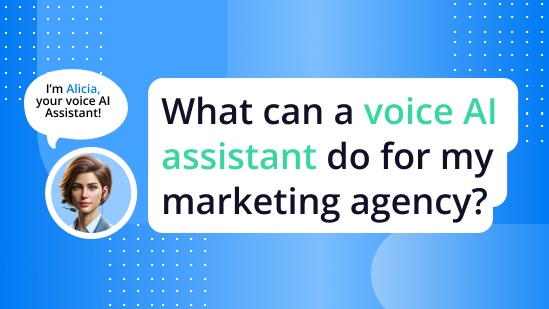Conversational Marketing Overview
Conversational marketing is a dialogue-driven, customer-centric approach that has revolutionized how businesses interact with their customers. It is instrumental in enhancing customer engagement, improving the overall customer experience, and ultimately driving revenue growth.
At its core, conversational marketing focuses on real-time, one-to-one interactions across various channels, allowing businesses to build relationships and tailor online customer interactions more effectively.
Tools of the Trade: Chatbots and Messaging Apps
The advent of chatbots has made conversational marketing more accessible. These bots, integral yet not wholly representative of conversational marketing, act much like a football team’s goalkeeper – essential but part of a larger team. Through live chats and messaging apps, these tools facilitate personalized conversations, with chatbots increasingly being used to automate data collection, provide product information, and qualify leads.
What are the AI Phone bots?
AI phone bots are automated telephone systems that use artificial intelligence to handle calls and interact with humans through voice. These bots are designed to simulate human conversation, understand spoken language, respond in a way that mimics human responses, and handle a variety of customer service tasks without human intervention.
Here are some key features of AI phone bots:
- Voice Recognition: AI phone bots use advanced speech recognition technology to accurately understand and process spoken language from callers.
- Natural Language Processing (NLP): They utilize NLP to interpret the intent of what is said, not just the specific words, allowing for more natural and effective interactions.
- Response Generation: Based on the input they receive, these bots generate responses that are coherent and contextually appropriate, aiming to provide information, resolve issues, or perform actions like scheduling, confirming appointments, or providing customer support.
- Machine Learning: AI phone bots learn from interactions to improve their responses and adapt to new types of queries or conversation patterns over time.
- Integration: They can integrate with databases, CRM systems, and other digital tools to retrieve information, update records, and perform transactions as part of the conversation.
AI phone bots are increasingly being used across various industries like telecommunications, finance, healthcare, and retail to enhance customer experience, reduce operational costs, and manage high volumes of calls efficiently. They represent a significant advancement in conversational marketing by enabling more personalized and responsive communication.
Callin.io is the first conversational marketing phone bot that increases website conversions by offering instant callbacks to website visitors who are interested in learning more about products or services. The software use AI to manage and automate callbacks efficiently, making it a potent tool for customer engagement and conversion optimization.
Key Features of callin.io:
AI-Powered Callbacks: The plugin enables websites to offer website visitors the option to receive a callback within a specified short period (like 15 seconds), providing immediate engagement.
Retrieval Augmented Generation (RAG): This feature allows the AI to learn from existing documents, website content, or previous customer interactions, enhancing its ability to provide relevant and personalized communication.
Integration with Website Content: It can integrate with a site’s existing infrastructure, using text data from the website or past communication to train the AI, making the interactions as tailored and effective as possible.
Callin.io can be particularly beneficial in the marketing sector due to its focus on enhancing customer interaction and conversion rates. Here are a few ways it could be applied:
Lead Generation: By providing potential customers with an instant callback option, it can increase the likelihood of converting website visitors into leads. This rapid engagement helps capture the interest of the visitor at a critical moment when their intent is high.
Customer Service and Support: The AI can handle initial customer queries and requests via callbacks, offering a more interactive and personalized experience than traditional text-based chatbots or email forms.
Data Collection and Analytics: Each interaction provides valuable data about customer preferences and behaviors. This data can be used to refine marketing strategies, personalize future communications, and improve overall customer service.
Cost Efficiency: With its model of charging based on phone traffic rather than a flat fee, it provides a cost-effective solution for startups and small businesses looking to enhance their customer interaction without a significant upfront investment.
Strategic Integration: Conversational vs. Inbound Marketing
While conversational marketing is often viewed as a component of inbound marketing, it serves a distinct role. Inbound marketing attracts customers through preferred channels, whereas conversational marketing engages them directly within these channels. This synergy between the two strategies enhances customer interaction by offering them control over when, how, and where they communicate with your business.
Benefits of a Conversational Approach
- Enhanced Customer Experience: Direct interactions help gather insights into customer preferences and pain points, allowing for more targeted communication.
- Improved Lead Generation: Interactive engagements not only convert but also qualify leads better by asking the right questions at the right times.
- Efficiency in Sales Funnel Navigation: Effective alignment with sales strategies ensures that potential buyers move through sales funnels more swiftly.
Implementing Conversational Marketing
- Choose Your Channels: Understanding your audience allows you to select the appropriate channels for engagement—whether answering FAQs, providing specific product details, or assisting in purchases.
- Personalize and Optimize: Tailoring conversations to the stages of the customer journey enhances relevance and impact, fostering stronger relationships.
- Continuous Improvement: Post-launch, it’s crucial to test and refine your strategies based on conversation data and customer feedback to maximize effectiveness.
Starting Conversations on Your Website
To implement conversational marketing effectively:
- Choose high-traffic pages for bot engagement to maximize interaction.
- Plan your bot’s conversation flow based on the visitor’s customer journey stage.
- Keep interactions straightforward to ensure a seamless customer experience.
Conversational marketing is not just a strategy but a transformative tool that facilitates a deeper connection with your audience throughout their online journey. From first-time visitors to long-term customers, this approach helps cultivate trust and foster lasting relationships. As I have experienced firsthand, integrating conversational marketing can drastically enhance both lead qualification and customer satisfaction, proving its value in today’s digital landscape.

Helping businesses grow faster with AI. 🚀 At Callin.io, we make it easy for companies close more deals, engage customers more effectively, and scale their growth with smart AI voice assistants. Ready to transform your business with AI? 📅 Let’s talk!
Vincenzo Piccolo
Chief Executive Officer and Co Founder


